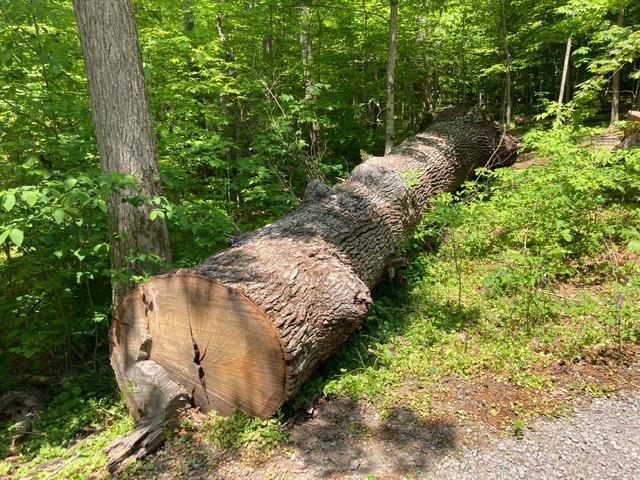Blog
Oh the Stories It Could Tell
by Tom Brochu, Cincinnati Nature Center Volunteer, Member of the Society of American Foresters, and Ohio Certified Volunteer Naturalist
If you have hiked on the Upland Trail at Rowe Woods, near Reservoir Pond, any time since last September, you’ve noticed the large White Oak (Quercus alba) that has fallen near the trail. We know by tree ring count that this majestic tree was about 250 years old. And majestic it was—at 56” in diameter (DBH–diameter at breast high) and 87’ tall!
As you are hiking past this tree, you might give a thought to what it has seen in its long life. First, forest ecologists know that oaks, especially white oaks, are disturbance species. That means they are well adapted to regenerate and thrive during and after fires or other disturbances in the forest.
In fact, they are better adapted to periodic moderate burns than to being under the shade of a dense canopy of overstory trees. (That’s one reason why there has been very little white oak regeneration and growth into the canopy in the last 50-75 years across the eastern United States.)
We may never know exactly what happened about 250 years ago that created the perfect conditions for our beautiful white oak. There’s a good chance that there was some sort of disturbance, maybe a windstorm or possibly a fire started by lightning or the Indigenous people who lived here. That disturbance must have followed a good acorn crop, known as a “mast year,” for there to be acorns or seedlings ready to take advantage of that sudden sunny opening.
White oaks can also benefit from more than one disturbance. Oaks have thick bark and deep tap roots enabling them to withstand the heat of a fire and recover quickly—far better than competing trees like maples. Our oak may have seen another fire as a teenager, but it already had strong bark and a deep tap root, enabling it to outcompete other trees following a fire and reach for the sky.
And that all happened before the major movement of American settlers west from the original 13 states to establish the Northwest Territories! Our majestic white oak was that old.
So, as you visit Rowe Woods and hike past this fallen yet still impressive white oak, you might pause and think about what else it has seen over its lifetime of 250 years.
Oh, the stories it could tell!
